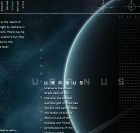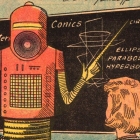-
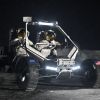 +29 +4
+29 +4NASA's new moon car for Artemis astronauts will be inspired by Mars rovers
NASA wants more than just a lunar golf cart.
-
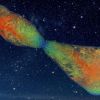 +15 +2
+15 +2A simulation of a dying star shows how it could create gravitational waves
Cocoons of debris around dying stars could shake ripples in spacetime unlike any astronomers have ever seen. “This is a potential source of gravitational waves that has never been investigated before,” astrophysicist Ore Gottlieb of Northwestern University in Evanston, Ill., said June 5 in a news conference at the American Astronomical Society meeting in Albuquerque.
-
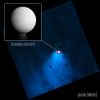 +24 +9
+24 +9Saturn's moon Enceladus is blasting a plume of water 6,000 miles high. Could life be lurking under its icy shell?
At 6,000 miles high, the plume is 20 times as wide as the tiny ice-covered moon.
-
 +32 +6
+32 +6China Announces Plan to Land Astronauts on Moon by 2030
The announcement formalized a timeline that Chinese scientists have set out before, as the United States and China ramp up competition in space.
-
 +16 +5
+16 +5A deep underground lab could hold key to habitability on Mars
Tunnels deep underground in North Yorkshire are providing a unique opportunity to study how humans might be able to live and operate on the
-
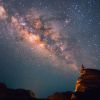 +13 +3
+13 +3We’re effectively alone in the Universe, and that’s OK
Solitude is not a curse—it urges us to explore the mysteries of our galaxy and beyond.
-
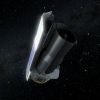 +24 +4
+24 +4A private company has an audacious plan to rescue NASA’s last “Great Observatory”
"I think it would be pretty ambitious... but really great if we could pull it off."
-
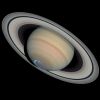 +13 +1
+13 +1New study puts a definitive age on Saturn's rings: They're really young
A new study led by physicist Sascha Kempf at the University of Colorado Boulder has delivered the strongest evidence yet that Saturn's rings are remarkably young—potentially answering a question that has boggled scientists for well over a century.
-
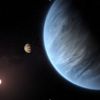 +19 +6
+19 +62 'super-Earth' exoplanets spotted in habitable zone of nearby star
NASA's TESS spacecraft found the two planets, which are slightly larger than Earth.
-
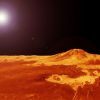 +4 +1
+4 +1There are More Than 85,000 Volcanoes on Venus
Researchers have mapped more than 85,000 volcanoes on the surface of Venus — but suspect there may even be more.
-
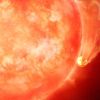 +15 +3
+15 +3Scientists catch real-life Death Star devouring a planet in 1st-of-its-kind discovery
The action 12,000 light-years away may presage what happens to Earth about 5 billion years from now.
-
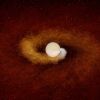 +10 +1
+10 +1It’s the End of a World as We Know It
Astronomers spotted a dying star swallowing a large planet, a discovery that fills in a “missing link” in understanding the fates of Earth and many other planets.
-
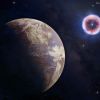 +17 +1
+17 +1You Don't Want to Be Within 160 Light-Years of a Supernova
When it comes to supernovae, what is the minimum safe distance for habitable planets? Larger than we thought.
-
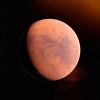 +23 +4
+23 +4For the first time, scientists detect seismic waves rattling through Mars' core
The observations reveal how the interior of the Red Planet works
-
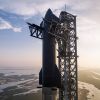 +20 +2
+20 +2A SpaceX rocket exploded. Here’s why the Space Force remains hopeful.
SpaceX’s Starship launch vehicle, the world’s heaviest rocket, could be a game changer for the Space Force, even after its first attempt at a suborbital flight on April 20 ended in an explosion. Despite the failure, service officials told C4ISRNET they’re hopeful about the rocket’s future and what the test flight means for the launch industry more broadly.
-
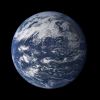 +17 +6
+17 +6No asteroid impacts needed: Newborn Earth made its own water, study suggests
'We learned something new about our own planet by looking at a large dataset of exoplanets.'
-
 +21 +4
+21 +4Object mistaken as a galaxy is actually a black hole pointed directly at Earth
According to new study, an object that was once believed to be a radio galaxy is actually an active black hole that changed angles to aim straight at Earth. Scientists are baffled by a supermassive black hole in a far-off galaxy that has suddenly turned sharply 90 degrees to face straight toward Earth while spewing radiation at close to light speed.
-
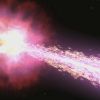 +10 +1
+10 +1The solar system was hit with a gamma-ray burst so bright, it blinded scientists' equipment in space
One astronomer dubbed the high-intensity beam of radiation the BOAT: the Brightest of All Time.
-
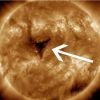 +13 +6
+13 +6A 2nd giant 'hole' has appeared on the sun, and it could send 1.8 million-mph solar winds toward Earth
The winds, which may trigger auroras, will likely reach our planet on Friday or Saturday, Daniel Verscharen from University College London said.
-
 +18 +6
+18 +6Scientists discover supermassive black hole that now faces Earth
This is a galactic-sized problem. Scientists revealed Tuesday that galaxy PBC J2333.9-2343 has been reclassified after discovering a supermassive black hole that is currently facing our solar system, reports Royal Astronomical Society. “We started to study this galaxy as it showed peculiar properties.
Submit a link
Start a discussion
